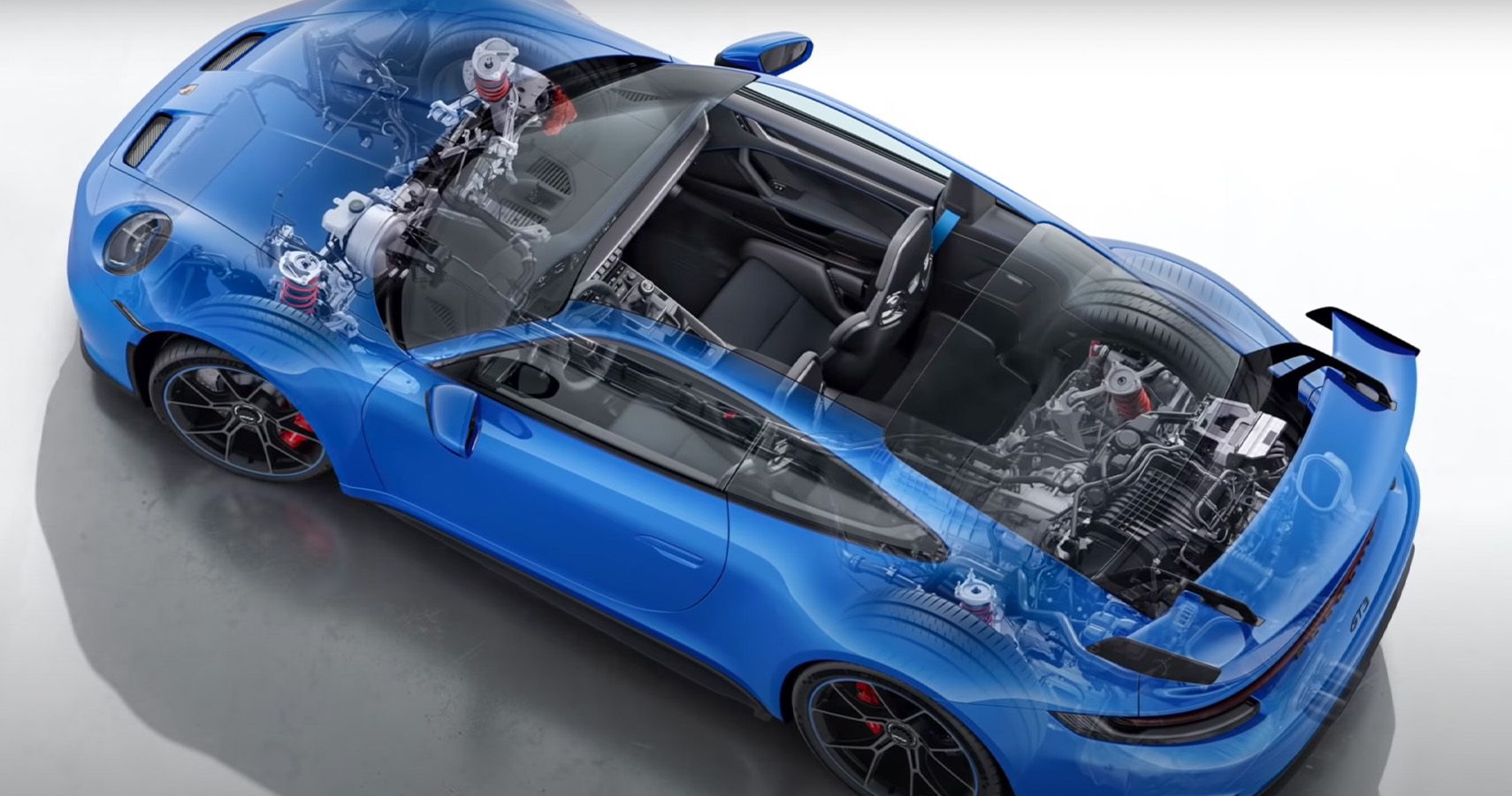Porsche's unique standing in the automotive industry stems from a commitment to respecting history while simultaneously propelling into the future with technological innovation. On one hand, the 911's rear-engined design remains an outdated testament to Stuttgart's long and storied traditions, while the Taycan has pushed the EV game up to a new level. The new 911 GT3, meanwhile, positions Porsche at the forefront of analog driving once again, with the return of a good-old-fashioned six-speed manual transmission. The screaming 4.0-liter flat-six remains a technological marvel from Porsche, and is impressive enough that the YouTube channel Engineering Explained simply had to release a video diving deep into its nitty, gritty details.
A Flat-Six Hanging Off The Rear Axle
Even Porsche knows that the 911's rear-engined layout really isn't ideal for performance driving—as proven by the 911 RSR race car's mid-engined design—and yet, the 911 GT3 sits at the pinnacle of the brand's track-specific offerings. The new-for-2022 911 GT3 was officially unveiled two weeks ago with up to 502 horsepower thanks to a screaming 9,000-RPM redline.
Track-Specific Details Derived From Motorsport
Eschewing the forced induction that even the base 911 has now embraced, the GT3's naturally aspirated engine only produces 346 lb-ft of torque, but at the track day, the high-rev horsepower stat becomes more important, with linear throttle delivery a close second. Meanwhile, high track speeds allow for the new model's advanced aerodynamics, combined with a new suspension setup, to achieve maximum grip despite the rear-engined design.
Going Deeper With Engineering Explained
Still, as host Jason Fenske explains, the GT3's new power-plant remains the star of the show. It employs individual throttle bodies, a dry-sump oiling system equipped with seven different pickup locations to reduce starvation potential during moments of hard lateral acceleration, and plenty of titanium throughout. In something of an unexpected comparison, Fenske brings in a 2015 Rolls-Royce Ghost, which employs a massive twin-turbocharged 6.6-liter V12 engine producing 563 horsepower and 575 lb-ft of torque. Comparing the two engines allows him to explain how the GT3 flat-six produces 86.6 lb-ft of torque per liter. The Rolls turbos add boost to the 12 cylinders, but it still only pumps out 87.2 lb-ft of twist per liter. Porsche's engineering masterstroke is the variable intake manifold with two resonance valves leading to the individual throttle bodies.
Watch the video to learn even more about the details that make this new GT3 an enormous step up from even its own predecessors. A step that in part, allows the GT3 it to lap the Nurburgring-Nordschleife a stunning 17 seconds faster than the outgoing model.
Sources: youtube.com and porsche.com.



